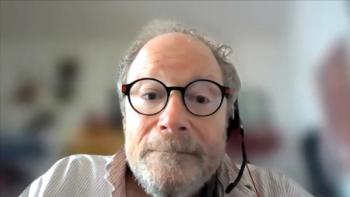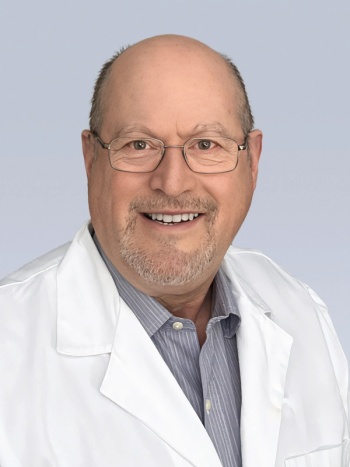
Robotic Device May ‘Level the Playing Field’ in Liver Cancer Surgery
Use of the surgical Epione robot will save a significant amount of time when performing surgery for patients with liver tumors and potentially other cancers, says Govindarajan Narayanan, MD.
Govindarajan Narayanan, MD, indicated that it is “exciting” to be at the forefront of bringing a device like the Epione robot into mainstream clinical practice for surgically managing liver cancer.
In an interview with CancerNetwork®, Narayanan, a professor of Radiology and an interventional radiologist at Miami Cardiac and Vascular Institute and the chief of Interventional Oncology at Miami Cancer Institute, both of Baptist Health South Florida, spoke about how he and his team needed to adapt to incorporate the use of Epione when performing microwave ablation, cryoablation, and irreversible electroporation (IRE) at their practice. Developers designed Epione to streamline several probe procedures, thereby making treatment of large tumors with various ablative strategies more predictable.1
“[Epione] levels the playing field,” Narayanan said. “It can bring less experienced users to do these [surgical] procedures with a higher level of accuracy. That may improve the availability of physicians who can offer these treatments in multiple centers.”
Narayanan also commented on his excitement for his institution becoming the first in the United States to successfully treat a patient with a liver tumor using this technology.2 Additionally, he described the learning curve of transitioning from guidance with CT monitors to the robotic workstation and suggested that future technological advents may allow physicians to conduct surgery remotely.
CancerNetwork®: Can you give me an overview of what surgical liver cancer care at your practice typically looked like before you started using the Epione robot? How has the advent of this technology changed your treatment approach?
Narayanan: The Epione robot is something that helps us with ablations, or the needle-based procedures that we do. When we do ablations, we typically use CT scan guidance or ultrasound. As interventional radiologists, we are trained to advance the needles in different planes. You go from the skin to the target, adjusting your needle along the way. The needle could be a little towards the head or to the feet, or anterior or posterior. You have to make all those adjustments as you’re doing it. Before Epione, all of this had to be done in your head, and you had to manually make the adjustments. With Epione robotics system, you plan everything in the workstation of the robot. Once it has plotted the path for you, you can pretty much push the needle from the skin to the target with one push instead of having to do multiple check scans, which involves radiation to the patient and to the operator.
What is your approach for selecting patients to undergo this procedure? Are there any patients for whom this approach would not be recommended?
Epione can be used to treat any patient for whom we perform image-guided ablations. It is pretty versatile.It’s not just for a single needle system; we have ablation technologies that use single needles and multiple needles. You need a software platform that can plan your trajectory for both single and multiple needles, which Epione can do. If you’re using one-needle microwave ablation, multi-needle cryoablation, or multi-needle irreversible electroporation [IRE] the robot can handle that and provide you with a planning tool. For any of these cases where you use freehand [techniques], you can now use the robot to perform the procedure.
Your institution is the first in the United States to successfully treat a patient with a liver tumor with this technology. What are your thoughts on this?
It’s very exciting to be at the forefront of bringing such a cutting-edge technology to mainstream clinical practice. I’ve watched some of my colleagues in Europe who have used it extensively, including professor Thierry de Baère, MD, of Gustave Roussy Cancer Center in France. He has treated well over 100 patients [with Epione]. After talking to him, I realized that it changed how he was doing ablations. To bring that into the United States and be the first to use it in the country is very exciting.
[In terms of] how has it changed what we do, first and foremost, there was a learning curve that we had to get over. After getting past the learning curve, we have now performed over 36 ablations using the robot. We’ve used it in microwave ablation, cryoablation, and IRE. What we’ve seen is that it has a high level of accuracy of getting us from the skin to the targets. It also offers other capabilities of planning. If you’re doing an operation manually, it can take a good amount of time, especially with multi-needle planning. With Epione, you just have to identify the volume of the tumor, click on the center of it, and pick the number of needles that you’re going to use. It gives you a trajectory for all needles that you’re going to place.
Everything is done with one click, so it saves a significant amount of time. And because you’re not doing multiple check scans when you place the needles, you’re saving on radiation time. Those are all exciting areas of advances in this space, where we’ve not seen much as far as technology advanced [go]. Technology has advanced. From radio frequency ablation, we went to microwave ablation, cryoablation, and IRE. But from a technical standpoint, we’ve been stagnant. Navigation tools were the first leap into the technological advances, and now we have this robot.
Are there any challenges or nuances to using the Epione robot that other physicians should know about?
Absolutely. We are re-programming ourselves and relearning the process that we’ve done for years, and even decades for some. When you’re used to planning your case, your trajectory, and your treatment on the CT monitor, you now have to move from there to using the robotic Epione workstation. That’s a big change because you’re no longer putting grids on the patient, and you’re not using laser pointers to mark your trajectory. You send all the images to the workstation, and then you plan there.
Additionally, having this robot and the workstation in the room will occupy space where you’re working, so trying to work around it in your workflow is another change. Getting all [the technology] ready in the beginning is going to take a little bit more time than what you are typically used to because it’s completely different. Those are the things that affect the workflow.
From a learning curve perspective, the microwave cases with a single needle were pretty straightforward. But when you bring in multiple needles—like for cryoablation and IRE—there is a steeper learning curve for those procedures based on how we do these manually. For example, when you are doing it manually, you can advance the needle as close as possible to the rib. But with the robot, you need to pick a path that will not cause any deflection of the needle if it hits something because even a minor deflection could take the needle tip off the trajectory.
You need to think about it a little differently. When doing the planning [with Epione], it can take you from lower to higher or higher to lower; it will get you the trajectory, but it may not be on plane as we would manually plan it. These are things that we will have to get comfortable with, so there’s definitely a learning curve. And depending on how busy or how experienced the user is, the curve can be smaller or steeper.
How do you imagine technology like this may impact treatment in the liver cancer field and perhaps other disease types later down the line?
[Epione] levels the playing field. It can bring less experienced users to do these procedures with a higher level of accuracy. That may improve the availability of physicians who can offer these treatments in multiple centers.
What do you hope your colleagues take away from this conversation?
We are at the beginning of an exciting technology that’s being introduced in the space of image-guided ablation. I see this [supplementing] the advent of 5G technology. In other countries, they’re using these robotic devices remotely; I feel that we will eventually get to the point where the science would allow us to operate on patients in remote locations, thereby improving access to these cutting-edge technologies in different institutions where they may not have the physician stationed there. I see Epione being able to help less experienced physicians do more complex cases with less radiation and quicker procedure times via remote access.
References
- Epione. Quantum Surgical. Accessed November 7, 2023. https://shorturl.at/dqyL6
- First patient treated in the United States with Quantum Surgical’sEpione® robot. News release. Quantum Surgical. May 24, 2023. Accessed November 6, 2023. https://shorturl.at/lzH01
Newsletter
Stay up to date on recent advances in the multidisciplinary approach to cancer.



















































































